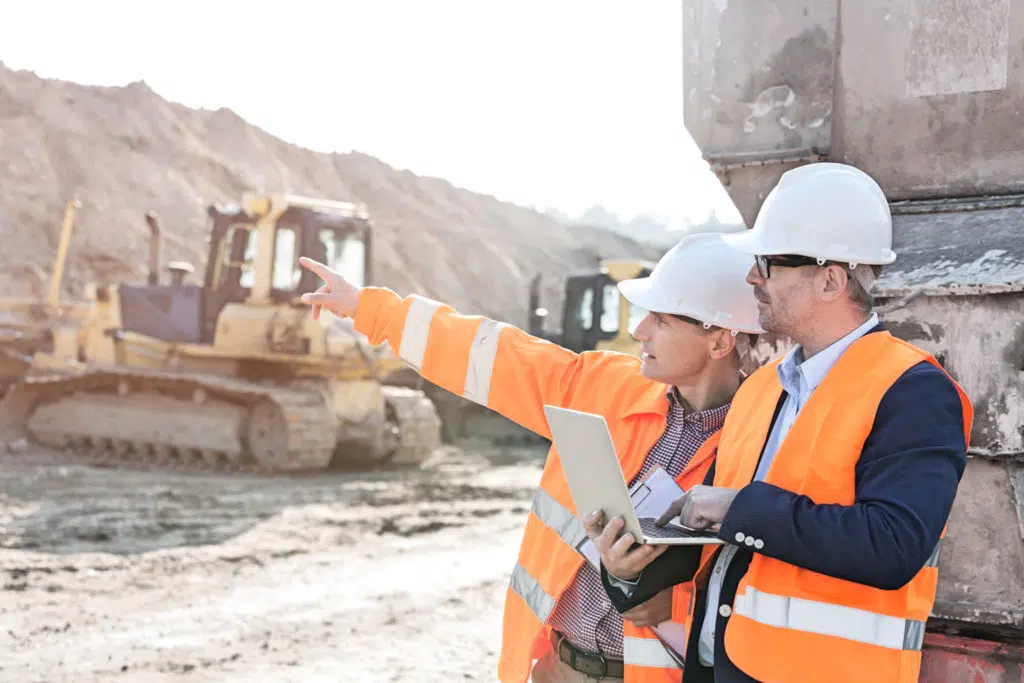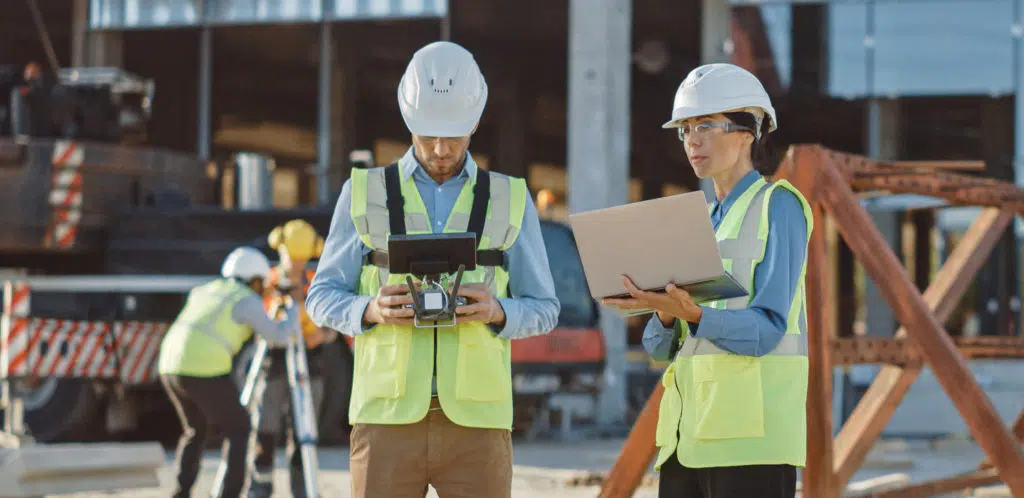How Construction Technology Supports Recruitment and Strengthens Teams
According to the 2020 Construction Outlook Survey from the Associated General Contractors of America (AGC), 81% of construction firms struggle to fill both salaried and hourly craft positions, and 72% expect labor shortages to be their biggest hurdle this year.

While the construction labor shortage has been a known issue for years, last year’s pandemic put even more pressure on already-understaffed companies.
The result? An overtaxed and dwindling workforce of skilled laborers, project delays, and higher costs. Some companies are turning away new projects that would help their business grow, simply because they don’t have the labor available to handle them.
But it’s not all bad news.
Here’s how technology can help your business recruit new workers, optimize existing teams, and retain a productive workforce in 2021 and beyond.
Attract new workers
As skilled workers age out of the workforce, they’re taking more than decades of experience with them—they’re leaving a gap that won’t be easy to fill.
One in five construction workers are over the age of 55, and for every one new worker entering the field, two are retiring. Preliminary analysis from the U.S. Department of Education, Transportation, and Labor indicates that the number of job openings in some construction sectors will be 68% higher than the number of people available to fill them by 2022.
And that’s just the tip of the iceberg.
According to the annual ConTech Report from JBKnowledge, 40% of contractors say that “lack of staff to support the technology” is their main limiting factor in adopting new technology—the same technology that will increase worksite efficiency and stretch their assets further over time.
When it comes to future-proofing their workforce, construction companies face a two-pronged challenge: a lack of younger employees to replace a retiring workforce, and a lack of skilled workers to support construction technology.
Attracting younger workers with innovative technology is a viable solution to both challenges.

Cutting-edge construction technology doesn’t just help make your worksite more productive; it’s also appealing to younger workers who are interested in interacting with the latest technology and adding some brag-worthy experience on their resumes.
That’s why many contractors are looking at technology as both a recruitment tool and an asset in its own right.
“From a business operations standpoint, when you’re competing for a small pool of labor, having things like tech training and career development can help incentivize workers to come join your firm,” PlanGrid’s Emily Tsitrian told ConstructionDive.
A better-trained, more tech-savvy workforce is both a clever marketing tool for attracting young, skilled workers (who might otherwise look outside construction for their career path) and for leveling up a company’s ability to compete in the modern marketplace.
Retain and strengthen existing teams
Right now, there’s an estimated 21.4% industry-wide employee turnover rate in construction—one of the highest rates in any industry. The average cost of a turnover is up to 20% of an employee’s base pay, which means companies are certainly feeling the pain in their finances as well as on the job site.
Retaining and strengthening your existing workforce is a smart business decision—and technology can help.
- Commitment to safety: Drones and drone data analytics tools keep workers safer by reducing or even eliminating the need to send surveyors out to walk dangerous terrain. With this technology, surveyors also can complete regular surveys of potential safety hazards, helping to assess haul road conditions, berm heights, and contours.
- Training opportunities: Leveraging technology gives employees the chance to learn new skills and work with exciting tools they might not find elsewhere. By cross-training your team on the available technology, you’ll not only strengthen your team’s existing skill set, you’ll create a more engaged workforce and reduce risk of decreased productivity.
- Eliminate misallocation and downtime: To put the right team in the right place, you need to know how much material you need to move, where your equipment is, and the status of a worksite at any given time. The rich data provided by drone 3D mapping software gives you exactly that, so you aren’t wasting precious time or resources.
- Improve dispute resolution: Construction software platforms keep all your site data in one place, so everyone involved—from clients to surveyors and project managers—accesses the same information. With documentation and proof of work at every stage, disagreements about who did what and when become far less frequent.

Embracing advanced technology and integrating it into your business and worksite practices demonstrates your commitment to not only keeping your worksites safe, productive, and efficient, but also supporting and empowering your workforce today and well into the future.
Enhance communication and collaboration across teams
Construction software and drone technology make it easier for teams to communicate, collaborate and move projects forward. With a single source of truth, projects run more smoothly, adhere better to planned schedules, and experience fewer risks.
Well-run projects equate to less stressful workdays, more engaged teams, and higher rates of job satisfaction. In fact, according to research on the construction industry in Jordan, more investment in technology directly correlates to increased job satisfaction.
And it’s easy to see why. Collaboration and reporting should be painless, but when everyone is looking at disparate data sets on incompatible software, it’s anything but.
Cloud-based drone data and analytics software like the Propeller Platform, for example, is easy to use and works on any browser—no prohibitively expensive licensing or complex software limited to a select few. Anyone with access and a browser can track progress against design, measure material quantities, and view site status over time.
Construction software platforms allow teams to house everything in one place: present and past surveys, design iterations, notes, reports, and every other piece of data you need. That’s what we call painless collaboration.
Now is the time to adopt advanced construction technology
Technology is one key driver in keeping companies competitive and ahead of the labor shortage.
Consider this, a Propeller customer recently shared that, “Technology is a great recruitment tool. I can bring up the Propeller Platform on a screen during an interview process, and it really helps to demonstrate that we are on the cutting edge and doing what we can to make the worksite better.”
From attracting and retaining qualified workers to maintaining a safe and effective work environment, technology may be the key you need to level up your operations.




